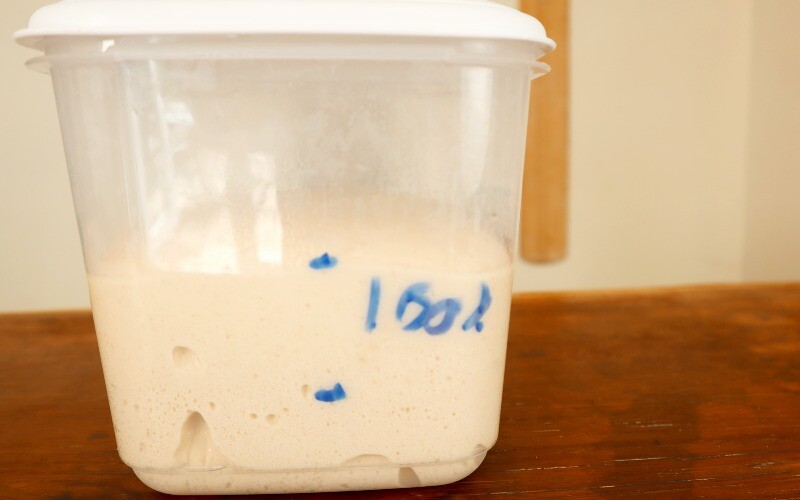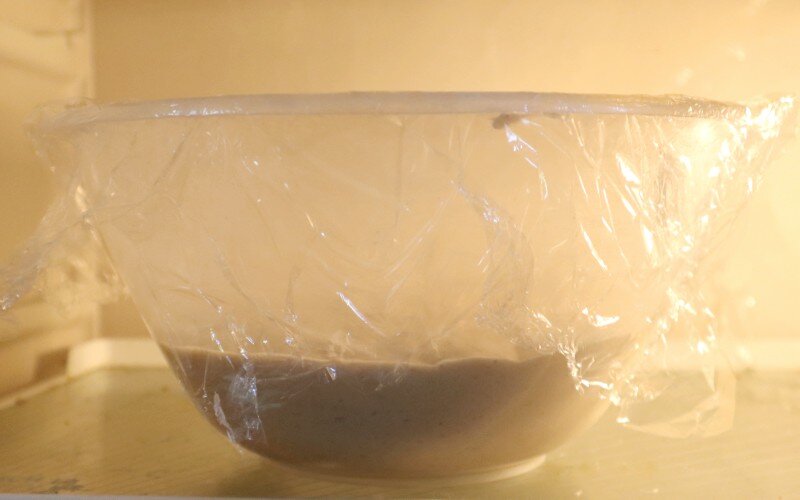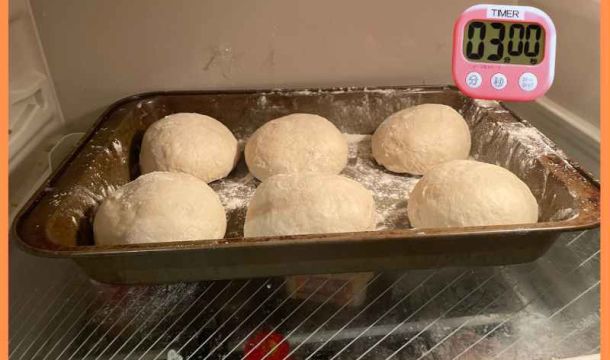
How Long Can Dough Sit Out?

Not sure how long to let your dough sit out? Can it be left out on the kitchen counter? Should I put it in the fridge?? Well, I’ve collated the most common questions asked about storing dough.
We’ll cover the safety reasons for leaving dough out, the types of dough that are OK to leave out and what happens when bread rises. I’ll also touch base on how artisan bakers treat their dough, so you can produce the best quality bread at home.
If you’re new to the site and you want to get the latest bread-baking tips, pop your email address in the box at the bottom of the article. In the meantime, let’s cover the topic of leaving bread dough on the counter.
How long can dough sit out on the counter?

The maximum amount of time dough can sit out on the counter is four hours for yeast-made bread, six for sourdough. Temperature, the characteristics of the sugars in the flour, the amount of yeast and the humidity of the room alter the length of the rise.
Bread is a fantastically nutritious food source that many enjoy making at home. It’s especially fun to eat, and many of us take great pride in using our hands to turn the raw ingredients of flour, water, salt and yeast into delicious warm bread for our family.
Does a four hour maximum rise include the first and second rise?
A standard loaf of bread will have a first rise (bulk fermentation) of 2 hours followed by a second rise of 1 ½ to 2 hours. Artisan bakers or those with cooler kitchens may find that it takes longer for the bread to double in size.
How long can artisan bread be left out for?
Artisan bread makers use temperatures below 25C (77F) which is cooler than many commercial bread producers. They will also use less yeast in their recipes, which means their dough has a slower rise which develops flavour and can be left out for longer than four hours.
How yeast works in bread making?
Simple sugars, broken down from the starch in the flour, penetrate the cell walls of the yeast. This starts the process of aerobic respiration.
Here, carbon dioxide gas is created alongside ethanol.
Enzymes start to break down other types of sugar in the flour, creating organic acids which add flavour and maturity to the dough.
Can dough sit too long?
If dough is left to rise for too long, it will cause issues with the taste and appearance of the bread. Excess fermentation occurring in either the first or second rise can lead to a sour, unpleasant taste if the dough gets left for a long time. Over-proofed loaves have a gummy or dense texture.
I’ve left my dough out overnight, what should I do?!
If you’ve left your dough out for a long time, chances are it will be overly gassy and smell a little alcoholic. The best solution here is to get the oven heated and baked as soon as possible. Perhaps place it in a tray heavily greased with olive oil to make an impromptu focaccia.
How long can dough sit after refrigeration?
If the dough has been kept in the refrigerator overnight, it will take up to two hours to warm up. If the temperature of the room is cold and the size of the prepared dough is large, it may be able to sit out for longer. Low amounts of levain award the dough a longer (slower) proofing duration.
How long can I keep bread dough in the refrigerator?

After the dough is kneaded, place it in a mixing bowl that’s large enough to allow it to double. Cover with plastic wrap or a tight-fitting seal and place the dough in the refrigerator. The dough will last three days in the refrigerator and can last up to five, though a slight degradation in quality should be expected.
How long can pizza dough be left out?
Authentic Neapolitan pizza dough contains a small amount of yeast, which is left out longer than standard bread dough. If the temperature is cool enough, pizza dough can be left for up to 24 hours.
Can I leave pizza dough out all day or overnight?
Yes. Use yeast at a rate below 1% of the weight of the flour. The temperature of the proofing environment should be below 18C (64F)to prevent it from over-proofing.
Can you leave dough to rise overnight at room temperature?
Dough that’s left to rise at room temperature typically takes between two and four hours to double in size. If left overnight, the dough can rise so high it will likely collapse on the weight of itself, making the dough deflate. For best results, always keep the dough in the refrigerator when leaving it to rise overnight.
Can I leave dough with eggs in it overnight?
If the eggs were previously stored in the refrigerator, they will sweat as they warm to the temperature of the room. This encourages bacteria to grow. It is best not to leave dough out that contains eggs for more than two hours.
Source: U.S. Department of agriculture
What can I do with dough that’s overproofed?
If the dough becomes overly gassy during the bulk fermentation phase, consider popping it in an oiled tray to turn it into focaccia. Pizza, though not as open-airy, can work well too. Worst case, bake it in a tin, and it can always be turned into croutons.
Summary
The standard time dough can be left out for is 4 hours. But this can change depending on the ingredients used and the baking methods used. The use of science to study the bacteria growth generated during the baking process should be acknowledged. There is an element of watching the dough to see when it’s ready to move on to the next stage of the process.
To find out more about the length of time dough should sit out, you may want to view the articles I’ve written on proofing and bulk fermentation. Let me know in the comments below if I’ve answered your question, and don’t forget to subscribe to the weekly email below!
If you’ve enjoyed this article and wish to treat me to a coffee, you can by following the link below – Thanks x

Hi, I’m Gareth Busby, a baking coach, senior baker and bread-baking fanatic! My aim is to use science, techniques and 15 years of baking experience to make you a better baker.
Table of Contents
Related Recipes
Related Articles
Latest Articles
Baking Categories
Disclaimer
Address
53 Greystone Avenue
Worthing
West Sussex
BN13 1LR
UK







